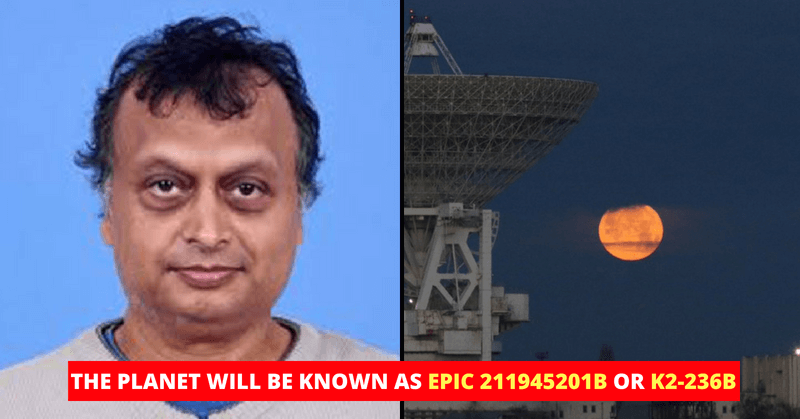The Ahmedabad-based Physical Research Laboratory (PRL) on Thursday discovered a sub-Saturn or super-Neptune size planet with a mass equivalent to 27 Earths and size six times of Earth around a Sun-like star. This discovery is very important for understanding the formation mechanism of such super-Neptune or sub-Saturn kind of planets that are too close to the host star and as well as planet formations around Sun-like stars, the space agency’s statement said.
Abhijit Chakraborty And His Team’s Discovery
Indian scientists led by Abhijit Chakraborty discover a sub-Saturn sized planet https://t.co/CH60ipmZ6m pic.twitter.com/aj3noKCoYM
— Kumaran (@ramanaku1) June 23, 2018
In addition, With this discovery, “India has joined a handful of countries that have discovered planets around stars beyond our solar system,” it said. The planet will be known as EPIC 211945201b or K2-236b. The discovery was made by a team of scientists and engineers led by Abhijit Chakraborty by measuring the mass of the planet using the indigenously designed “PRL Advance Radial-velocity Abu-sky Search” (PARAS) spectrograph integrated with 1.2m Telescope at PRL’s Gurushikhar Observatory in Mount Abu, India.
Indian scientists discover ‘sub-Saturn’planet
Read More: https://t.co/aazucMlMU5#IndianScientists #NewPlanet #Discovered #SubSaturn #PRL pic.twitter.com/TT4yiWpSQv— Khan Study Group (@khanstudygroup) June 23, 2018
Furthermore, What Abhijit and his team have found is called an exoplanet that’s orbiting a star 600 light years away from Earth. And exoplanets are basically planets that orbit stars other than the Sun. “Exoplanet discovery has become one of the most exciting areas of research.”, says the director of PRL, Anil Bhardwaj. And as of June 2nd, 3786 exoplanets have been discovered. Check out ISRO’s official statement here.
How Are They Found?
Indian scientists discover sub-Saturn like planet around Sun-like starhttps://t.co/6b1JbNZePd pic.twitter.com/5TuC22ipnC
— Zee News (@ZeeNews) June 22, 2018
Jn addition, Abhijit, and co. they observed the light emitting from the star. So, any changes in its wavelength would indicate the existence of a planet. Now, the first criteria for a planet being able to support any life form are that it has to have liquid water. So, in case of planets orbiting around a star, there’s a band around it that creates conditions for hosting liquid water on the planet. And that is called the habitable zone or its much zanier sounding name, the “Goldilocks” zone.
Is It Habitable Or Not?
https://twitter.com/DesanAcademy/status/1007313502111797249
Furthermore, The surface temperature of K2-236b is around 600 degrees Celsius. That’s because the planet (or exoplanet) is 7 times closer to its host star than Earth is from the Sun. So, the answer to that question is that it’s not very likely that it’ll be able to sustain life.
But the mission is accomplished which was to confirm its planetary nature and Abhijit and his crew did it. The research work will appear in the June issue of the Astronomical Journal owned by the American Astronomical Society. What do you think about this? Let us know in the comments below. Also, check out these Indian inventions which you probably didn’t know were Indian.














